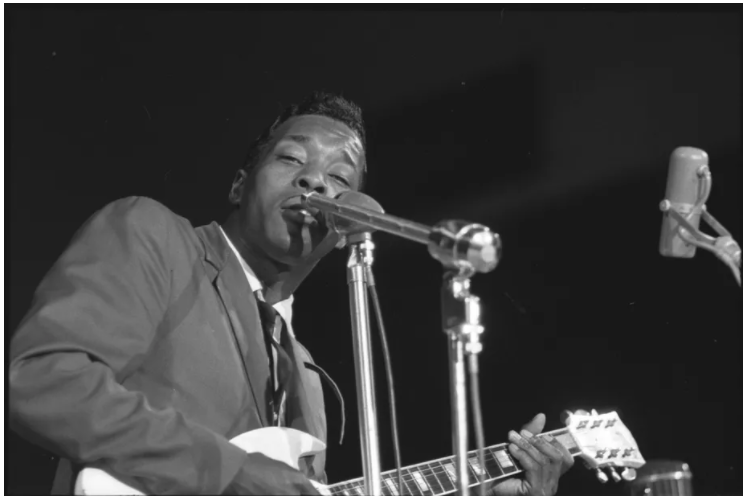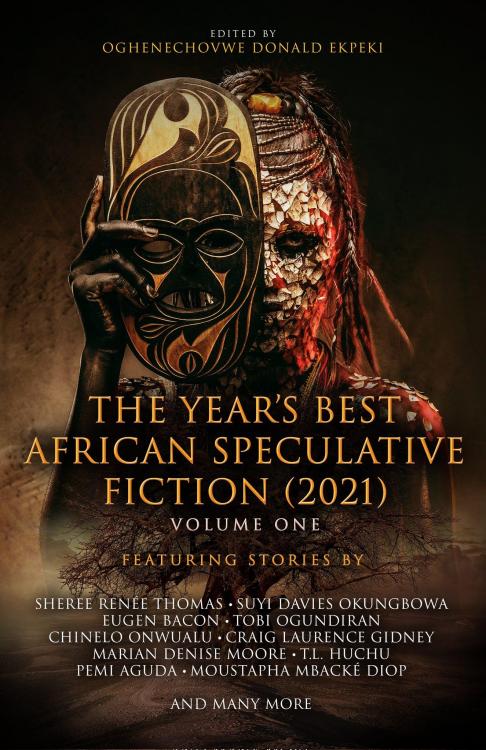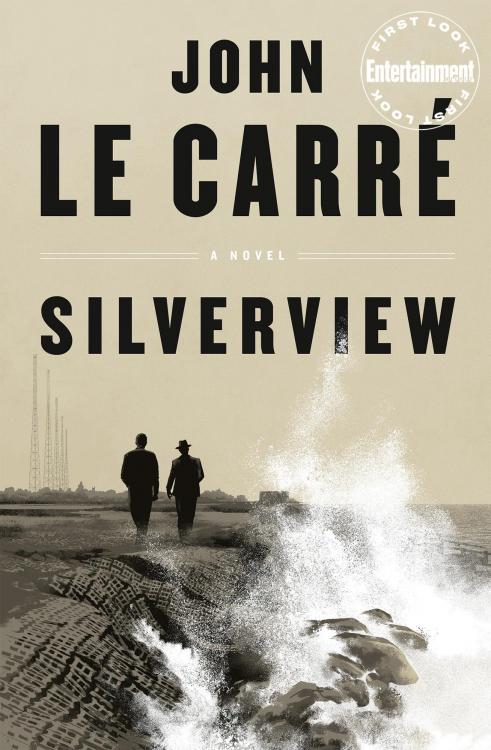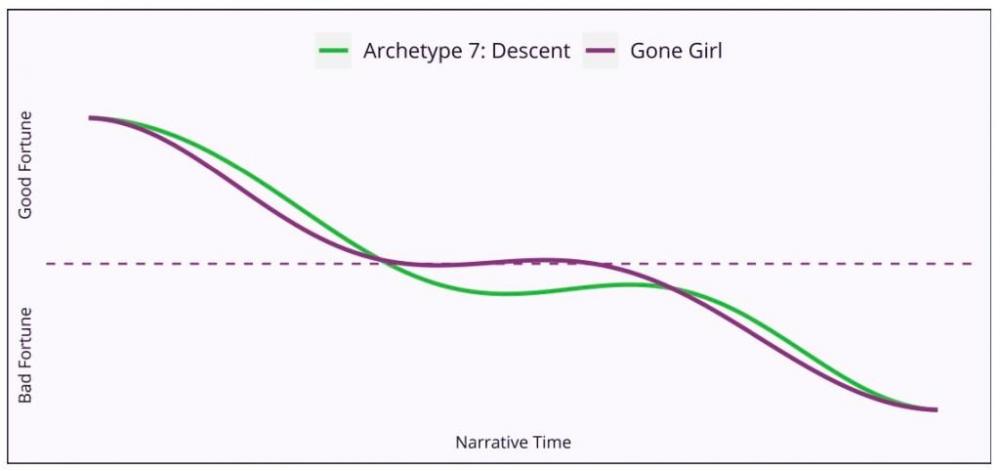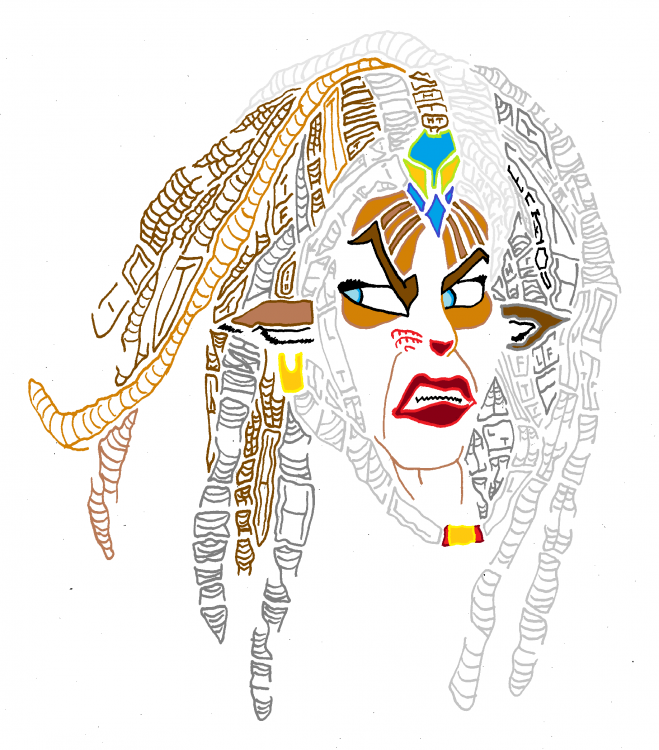-
Posts
2,425 -
Joined
-
Last visited
-
Days Won
91
Content Type
Profiles
Forums
Blogs
Events
Status Updates posted by richardmurray
-
Sneakers are often designed for men by men. So track star Allyson Felix built her own
BY ELIZABETH SEGRANFelix’s new company, Saysh, is designed to be an alternative to the male-oriented sneaker companies that drive the sports world.

Allyson Felix [Photo: Harrison Boyce/Saysh]
Allyson Felix is the most decorated Olympian in track and field history. But a few years ago, she had a problem: She had no shoes to wear. In 2019, she publicly cut ties with Nike, her main sponsor, when she asked the company for maternity protections and was stonewalled. A few months later, she signed a new sponsorship contract with women’s activewear label Athleta, which vowed to support her as both an athlete and a mother. But Athleta didn’t make sneakers. So what would she wear to her next race? “We hated the idea that she would go and offer free advertising for a brand that didn’t want to sign her,” says Wes Felix, Allyson’s manager and brother. “One day, I looked at her, and said: ‘What if we built our own shoe company?'”
So that’s what they did. In 2020, Allyson and Wes cofounded Saysh, which is designed to be an alternative to the male-oriented sneaker companies that drive the sports world. As she heads to the Tokyo Olympics, she will proudly wear spikes custom built for her by Saysh’s designers. And this September, the brand will release its first product, a $150 sneaker tailored to the distinct anatomy of a woman’s foot. It will also launch an online community that will give subscribers access to workouts, digital content, and chances to interact with other members, including Allyson herself.
A FAMILY BUSINESS
At 35, Allyson is one of the top track and field athletes in the world, with six Olympic gold medals and 11 world championship titles to her name. For most of her career, she’s kept her head down and focused on her sport, but over the past two years she’s emerged as an outspoken advocate for women. She shared the story of her difficult pregnancy to draw attention to the struggles that Black mothers face in the health system, and just last week she partnered with Athleta to launch a $200,000 childcare grant for mothers who are athletes. In many ways, Saysh is the next step in this advocacy.Wes believes it was Allyson’s experience with Nike that drove her to the brink. “We started this company from a place of pain, hardship, and sadness,” he says. “It all comes back to her feeling like she was thrown away, undervalued, and an afterthought, which broke her in a lot of ways. I’m so glad that we’re bringing Saysh to the world, but I would never want Allyson to go through that again.”
Wes and Allyson have always been close. As children, they were both athletic, so they often spent hours on the track running together. In college, Wes served as captain of the track and field team at the University of Southern California, and for three and a half years after he graduated, he was an athlete sponsored by Nike. But he was always interested in becoming a sports agent or a manager. As Allyson’s star continued to rise, Wes believed he could help her negotiate better deals with corporate sponsors. So, when she was 22 and he was 25, he pitched the idea of becoming her agent for a year, to see how they got along. “We come from a close-knit family with a dad who is a protector,” Wes says. “He said, you need to protect your sister. You guys need to work together in such a way where you can look out for one another.”
More than a decade later, the two are still working together. And while other agents may have cautioned Allyson against cutting ties with a giant like Nike, Wes says he was far more concerned with her happiness and well-being than with her financial success. “As an agent, I was told that I would never again do another deal in the sport for helping Allyson take this stand [against Nike],” he says. “But it was the right thing to do.”
DESIGNING A SNEAKER FOR WOMEN
Most sneakers on the market aren’t specifically designed for women’s feet, say Saysh designers Tiffany Beers and Natalie Candrian, who left their jobs at Nike to work for Allyson. For much of the 20th century, women weren’t allowed to participate in professional sports, so shoe companies designed basketball and running shoes based on men’s feet. These became the prototypes for the modern athletic shoe. “Sports was a man’s world, and the sports shoes were built for men,” Candrian says. “But it’s a bigger problem that persists today. The attention, money, and sponsorships still tend to go towards men.”Even now, when scores of women wear sneakers every day, Beers and Candrian have observed that many shoe brands create a single shoe model designed for a man’s foot, then simply make smaller sizes for women. Yet, women’s feet are different from men’s. For one, the fat content in women’s bodies is distributed differently than it is in men’s bodies, so their feet must carry this weight differently. And anatomically, a woman’s heel tends to be narrower and her forefoot tends to be wider proportionally than the heel.
As they developed their introductory product, the Saysh One, the designers built it around women’s proportions. They also created a higher heel, which many women find more comfortable. The end result is designed to feel like pulling on a comfortable pair of jeans that fit snugly and provide support in the right places. “When we started this project, we said, ‘Let’s pretend men’s shoes don’t exist. Let’s pretend shoe’s don’t exist,'” Beers says. “If a woman was going to build a shoe for herself, what would she create?”
Aesthetically, they were focused on creating an instantly recognizable look that could one day be iconic. There are lines that traverse the length of the shoe and crisscross each other on the front. Candrian says the wrap dress was one of her inspirations. “The ideas of the lines crossing diagonally is a flattering visual,” she says. “The lines remind me of a track.”
The shoe is available for preorder in three colors and will ship in September. It will also be available for sale in Athleta stores. And the team already has a pipeline of other products to roll out in the fall and winter, which includes other shoes and apparel. But the goal for everything Saysh does is to create a space that’s entirely focused on women’s needs. “The real vision is to create a community by women for women,” Wes says. “We will keep going back to our community and asking them what they want to see in the world.” -
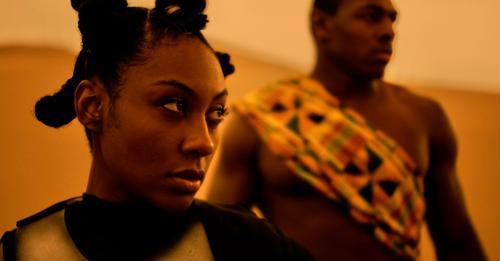
From the author: Hey everyone, I’m working on something special. I’m not a part of a major studio or have any insider industry connections.
Actually, I’m based all the way in St. Louis. So what you see here I’ve been able to do with a small dedicated and talented group of people.
Please consider contributing to this campaign in any way you can. A simple share will go a long way. Thank you
SHORT VIDEO AND WAY TO SUPPORT AT THE LINK BELOWWhat's UNDERNEATH About?
UNDERNEATH is the first feature film from David Kirkman. During the U.S Civil War, Amir, a slave from Little Dixie, MO is thrust into an intergalactic crisis after encountering an alien from a crashed spaceship. Throughout the film he learns that he's more than what his environment has forced him to be and discovers his inner power to change and manipulate his entire reality... Amir comes across characters from different planets, characters directly connected to the Haitian Revolution of 1804, finds what it means to truly love, and much much more. So be prepared for something you've never quite seen before on screen with these dynamics in place.Director's Statement
In 2018, I made short film called Static Shock, based on the character of the same name. It was the first time that a serious take on the character was made live action. Me and my friends made it for $3,000 and at the time of screening the film across the country, we didn't quite realize the gravity of the imagery we created. Long story short, when I released the short film on my YouTube channel in 2019- it went viral. Altogether the series has a combined 2.5 million views online.In addition to traveling the country, myself and a few people a part of the team were flown out to London, Germany, and the Netflix HQ itself in San Fransisco to screen the series.
The thing is: people are hungry for stories in film that expand our imaginations of who black people are, have been, and who we can be; in fun and entertaining ways of course. Myself and the Woke Nation team ended up creating the short films ICON (2020), NOBLE (2020), and recently HARDWARE (2021). All of these short films are based in the Static Shock world, honoring the groundbreaking legacy of Milestone Comics from the 90s and the legacy of Dwayne McDuffie.
Now building on everything we've learned from creating those short films, we're leveling up again. As the saying goes: Here we grow again! But with original content.
I remember growing up being completely obsessed with Star Wars- I mean COMPLETELY obsessed. I was the kid in Ferguson (the birthplace of the Black Lives Matter Movement) who was able to get all of my friends on my street to believe in my little Star Wars fantasies and act it out with me. I'd organize my friends into teams: the Dark Side and the Light Side, and would organize the lightsaber duels utilizing a combination of the $6 lightsabers from Walmart and tree sticks lying around outside. But there was always this disconnect because every major character I really looked up to in Star Wars didn't look like me.
In UNDERNEATH, with your support and donations, we're going to take everything in the sci-fi genre up a notch. We're intersecting black history, which grounds the lore and gives our world verisimilitude, with Afrofuturism (black sci-fi). Also in the film we explore ancient Kemetic (African) principles and truths in a very entertaining way.
Thank you so much for supporting this cause, and thank you for believing in me and the Woke Nation team. I look forward to creating history with you. ~ David KirkmanMORE QUESTIONS
https://www.kickstarter.com/projects/underneath/underneath-sci-fi-feature-film-by-david-kirkman/faqs
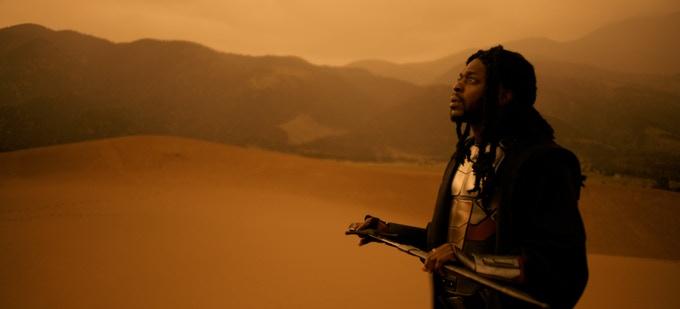



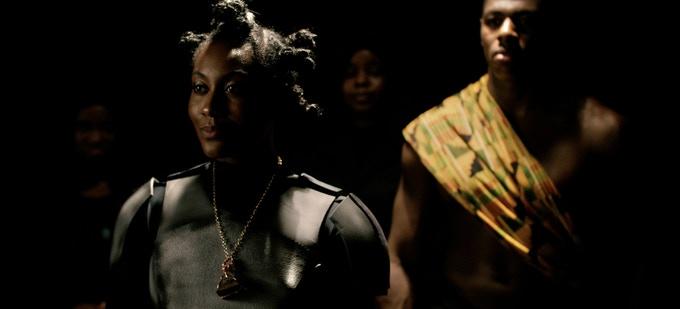
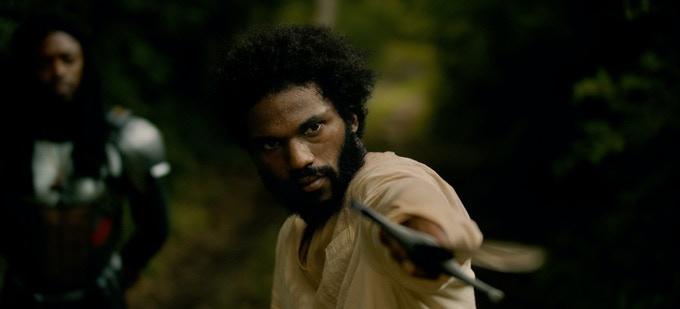
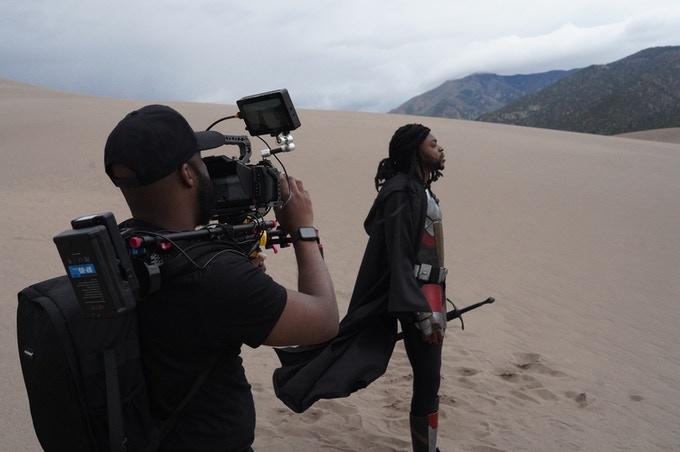

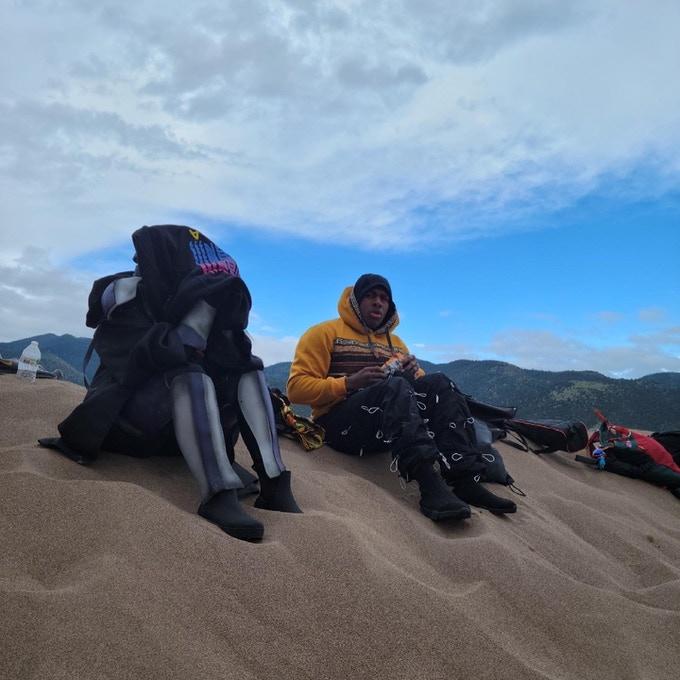
-

Was asked by someone online, the following is my answer
Its fine. I rarely hate any art. I never say any art is bad. No artists is trying to make bad work. So, an artist may fail to achieve what they wanted in terms of audience response or I may dislike a works aspects but it wasn't for lack of trying. .... I will specify a question. IF the question is, how does the what if series settle into the modern media of comic book story discussions? I think it settles into a pit. Modern media is for many the nonviolent warzone. How many black characters? how many female characters? how many white characters? how many christian characters? how many muslims characters? how many young characters? how many old characters? How many hetero characters? how many lgbtq+ characters? how many atheist characters? and then once people get past the quantity of representation. Now the condition of the characters. He is black, but do black people like him? she is fat, but do fat people like her? They are lgbtq+ but do the lgbtq+ like them? The couple are bdsmers but do the bdsmers like them? Number of characters and then how are the characters portrayed. What If is a pander to those questions. People sadly think, that when a character has their traits it means something. I have said this in the past and I will say it now and I will say it in the future. No artist is blockaded to creativity, in my view, but I look at the originators of characters as important to how I define their essense. Give me a black written /black drawn character and I will associate them to being black. I have always been a storm fan. Always will be. But, Storm wasn't designed by a black person. and, a black artists later manipulating what a white artist created. While in no need of validation as art, I do not see or will accept as a black character. What if captain america is a woman? What if Thor is transgender? What if Iron Man, a fiscally spoiled rich kid engineering genious, is Black? What if will have many lovers cause it gives visual form to a small set of infinite possibilities. What if is in my view, a video form of what comics originally were. We forget, before characters became so popular they had their own comics, and became rigid or cultural identifiers, most comics were what ifs? Most comic characters started out in what ifs. A writer has an idea and pitches it to the audience. If the audience like it you will see them in another edition.
-
Well... it is another Friday, another day to love, to Oxum, Oshun, Freya, or Venus, another day to Kizomba!
Andy Cessay <this is his school> & Reem Disu do Kizomba the correct way for the intimate, for the lovers. enjoy the pure routine. i enjoyed this one alot. Kizomba is at its best when it go to its root which is not overemphasis or tricks; it is when it go back to the simple floor in a luanda home two working people made, listening to some simple guitar, using bolophone rhythms and trying to recall better days before every day became a hunt for self. -

THIS MILLENNIAL BOUGHT EBONY AND JET FOR $14M WITH PLANS TO BRING THE MAGAZINES INTO THE DIGITAL ERA
by Dawn OnleyAugust 11, 2021
Founded in 1945 by John Johnson, Ebony struggled under declining advertisements, financial troubles, and controversy a few years ago. It was quite a shift from the magazine’s heyday, when Ebony and sister magazine, Jet, were the go-to publications for people interested in reading about Black culture, notable Black leaders, and issues impacting Black people.The company eventually filed for bankruptcy, and by 2019, both Ebony and Jet had stopped printing. This was an opportunity for Bridgeman and her father, former NBA player and entrepreneur Ulysses Junior Bridgeman, to discuss the magazine with the family to gauge interest in purchasing.
Bridgeman told Business Insider she jumped at the opportunity. The family purchased the legendary pubs for $14 million — and Bridgeman began talking with Michelle Ghee, a former executive at CNN and BET, about serving as CEO. Together, they relaunched Ebony on March 1 and are planning a relaunch of Jet later this year.
Ebony’s new mission is to be bold, brilliant, and beloved. Both magazines are now fully digital with no plans on reprinting physical copies.
According to Business Insider, Ebony has at least a dozen people on staff. Bridgeman’s role has been all-encompassing — from calls with advertisers to meetings with potential partners and magazine contributors.
“You have to understand every aspect within the business,” Bridgeman told BI. “You show up in a way that people feel they can approach you. They feel that they can work with you, not only just for you.”
Bridgeman’s strategy has seen her touting the power of the Black dollar to potential advertisers. “You are going to want to tap into that power,” she tells them, according to Business Insider.
https://www.blackenterprise.com/this-millennial-owner-bought-ebony-and-jet-for-14m-with-plans-to-bring-the-magazines-into-the-digital-era/
- Show previous comments 1 more
-
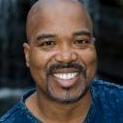
Hi @richardmurray in your blog post questioning Ebony's viability you wrote, "...in the usa people, all races, are buying less and less books in any form." I was wondering where you got that stat?
No I do believe a print version of Ebony will be wrought with challenges. I just don't think a lack of potential readers will ne their problem. The need to publish substantive articles. Celebrity fluff will not cut it -- at least not with me.
It they follow the mainstream media's lead, in the way Black people are covered, they will fail. Ebony needs to elevate itself above the fray -- the way they did in the past.
-

thank you to Troy < https://aalbc.com/tc/profile/9056-troy/ > , I said all forms, I meant all forms of paper based books, pbooks:: magazines on the rack, newspapers, retail paper books similar. Audiobooks/ebooks are always upward. and libraries are in heavy or growing use. So I misspoke:)
-

I Said
you argue that black people forgot or lost sight of ourselves with the push to integrate as equals to whites, but who was ourselves? Your words suggest a unity or communal organization that did not exist. Remember, Frederick douglass/nat turner/web dubois/booker t washington were in each others lifetime; they did not have similar minds about various questions to the black individual or community. Do most black people want better for black people? yes. But the definition of what that means has never been agreed upon in our community. Sequentially, what you say was a mistake was what many black people wanted. Not all black people, not me, not you or cynique, but in a population of tens of millions, many.
Troy < https://aalbc.com/tc/profile/9056-troy/ > said
The disagreement between the likes of Frederick douglass/nat turner/web dubois/booker t washington was between individuals. I'm talking about a people.
There certainly was greater unity in the past than there was today. The unity was required for our very survival. Here in Oklahoma I'm aware of many thriving Black towns that existed because white folks refused to let us live in their communities.
That does not mean everyone in those communities agreed on everything -- that would be impossible. N=They however agreed on enough to create wealth in the face of constant existential threats.
Today it is questionable if we can generate enough unity to maintain a magazine that provided the agency to speaks to our needs and tell out own stories ... and that is sad.
So yes I look to the past the lament the lack of solidarity that we had in the past.
My Reply
each one of those men had many black people who aligned to their philosophy. Is that true or not? If it is not true, then as you say, their philosophical variance is merely individual. If true, then it is a communal issue.
Unity is not organization, they are not the same thing. In the comments sections in this forum most black people , you+ me+ mzuri+cynique, all are unified. we all support this black owned website, but are we organized? no. The key here is the difference between unity or organization. If unity is organization to you then you are correct.
The word agree means to like. The word accept is to take something, whether you like it or not. For this phase in my response. I will use the word accept , in place of your word agreement. Why? Agreement isn't about organization, a thing of the body. Organization is about acceptance. When the irish mob relented to the italian mob in NYC, it wasn't agreed it was accepted. Getting all in a group to like a thing is near impossible. But getting all in a group to accept a thing is mandatory if it is to function positively. To your point, black people whether we liked it or not accepted, the situation under white power. Thus we collated into towns and , proving my point, the second white people allowed blacks in their towns, the exodus of many blacks from our towns. Those blacks never liked or agreed to living side other black people, but they accepted it, under white power. But a strong organization isn't when the body is formed under pressure from outside but when it is formed from balance within, ala the irish mob and italian mob in NYC.
And that leads to my point. You question if enough unity exists. I know enough unity exists. Most black people want better for black people, ala this website's mere existence. But unity is not organization. And that was why I said the better stratagem for Ebony is to focus on fiscally wealthy blacks, all throughout humanity. Yes, most black people, including me and I think you, are not part of the fiscally wealthy black group. But, that group's members have a lot in common. All are fiscally wealthy, thus absent the difficulties being fiscally poor brings. Most, over 90%, have a positive relationship to some whites. Now they do not all speak english, are not all african, but the Ebony magazine can bridge those bounds. My original comment suggested ebony can succeed. But not by catering to the entire village, it must cater to a tribe in it. And why? cause the village in the usa or beyond it is not organized. And never was.
Fair enough, we had a solidarity in the past, but that was under white duress. The future goal, is to see what kind of solidarity we can make without pregnant black women being hanged, without black children being electrocuted for living, without formerly enslaved illiterate black men signing their lives away for bread, without black towns at the mercy of the white towns next to them. Black people being forced side other black people cause all of them are afriad of whites is a solid thing, but I rather black people want to be side other black people cause we want to be. And we have yet to prove that, in the usa at least.
-
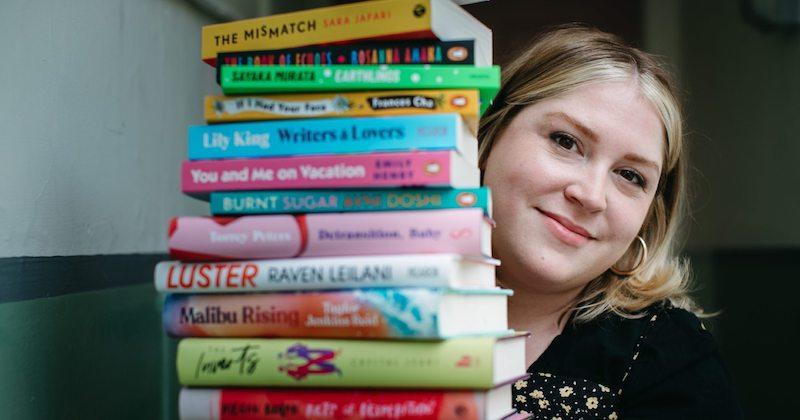
This new Scottish bookstore will only stock books written by women.
Avatar
By Walker Caplan
July 27, 2021, 12:52pm
Earlier this month, author MA Sieghart revealed in The Guardian < https://www.theguardian.com/books/2021/jul/09/why-do-so-few-men-read-books-by-women > that, according to statistics she commissioned from Nielsen Book Research, the top 10 best-selling female authors’ readership is only 19% men. The top 10 best-selling male authors’ readership is much more evenly split, with 55% men and 45% women. So how do you get people to read more women? Scotland-based bookseller Rachel Wood has an idea: her bookstore Rare Birds Books < https://rarebirdsbookclub.com/ > , opening in Edinburgh on August 6 < https://www.thenational.scot/news/19471741.rare-birds-books-scotlands-first-female-centric-bookshop-open-capital/ > , will stock only books written by women.Rare Birds Books is the culmination of Wood’s longtime mission of supporting female writers and viewpoints. “Through university I noticed the reading lists were always dominated by male authors,” Wood told The Sunday Post. < https://www.sundaypost.com/fp/rare-birds-book-club/ > “The lens you would see the whole world through was always from men, basically. I was always trying to push things in the opposite direction. So I started asking, ‘What if the lens we viewed everything through was created by women authors?’”
This lightbulb moment led Wood to start the Rare Birds Book Club < https://rarebirdsbookclub.com/ > , a monthly subscription book club completely composed of contemporary novels written by women. For Wood, it’s a way for women to come together to read female authors, as well as men to expand their reading horizons. During the pandemic, Rare Birds Book Club grew much quicker than Wood imagined; overall sales increased by 204% < https://www.sundaypost.com/fp/rare-birds-book-club/ > from January 2020 to 2021. Still, 97% of Rare Birds’s customers are women. Now, Wood is hoping an in-person storefront will draw more types of readers—including men.
“The bookstore space is going to be really beautiful and really welcoming so I’m hoping it’s going to draw in more people, who want to poke in their heads and check it out,” Wood told The Sunday Post. “Plus, once you’re in the bookstore would you really notice, unless we pointed it out, that all the books were by female authors? Probably not. You’re just picking up a book that looks interesting to you. I’m hoping we can really open the eyes of a lot of readers.”
https://lithub.com/this-new-scottish-bookstore-will-only-stock-books-written-by-women/
Rare Bird Books
https://rarebirdsbookclub.com/WHAT ARE THE FASTEST SELLING BOOKS IN U.S. PUBLISHING HISTORY?
I quote in double brackets
<<
Can you name any of the fastest-selling books of all time? In the United States? Maybe. But people tend to focus on the best-selling books, which is slightly different.The best-selling books, like the ones the New York Times Best Seller List covers every week, are the ones that sell the highest number of total copies, while the fastest-selling books are those that fly off the shelves at top speed. Among the best-selling books of all time are The Bible, Don Quixote, and The Lord of the Rings. But did you know, that among the fastest-selling books in the U.S. are political memoirs and a certain magical boy?
>>
https://bookriot.com/what-are-the-fastest-selling-books-in-u-s-publishing-history/Censorship Scholar On Book Bans And Critical Race Theory
I Quote in Double Brackets
<<
TRANSCRIPT
MICHEL MARTIN, HOST:It's the summer, but the fight over what to teach and how has reached a fever pitch. Conservative media players and politicians have been waging a fight to ban so-called critical race theory. And while the war is national, the battles are local, with schools, school boards, libraries and even individual teachers facing challenges over what to teach and which books to include on the shelves and in their curriculum. According to Education Week, 26 states have already introduced bills or taken steps to restrict teaching, quote, unquote, "critical race theory" or limit how teachers can talk about racism and sexism.
We wanted to know more about how all this is playing out, so we called Richard Price, a professor at Weber State University in Ogden, Utah. Professor Price focuses on censorship and book banning in schools and libraries, as well as school curricula. They also write the Adventures and Censorship Blog, which tracks efforts around the country to ban or censor books.
Professor Price, welcome. Thanks for talking with us.
>>
FULL Transcript or Audio in article
https://www.npr.org/2021/07/25/1020488416/censorship-scholar-on-book-bans-and-critical-race-theory?utm_source=Sailthru&utm_medium=email&utm_campaign=Lit Hub Daily: July 27%2C 2021&utm_term=lithub_master_listReese Witherspoon’s Hello Sunshine Sold for $900 Million to Media Company Backed by Blackstone
https://variety.com/2021/film/news/reese-witherspoon-hello-sunshine-sold-1235032618/MAIN ARTICLE
https://kobowritinglife.com/2021/08/06/a-booker-longlist-and-fast-selling-books-this-week-in-book-news/
-
An african speculative fiction anthology, some are freely available to read. I will list them under the link
cover artist: Maria Spada - from the phillipines
Thank you SOular poer reading group
https://www.facebook.com/groups/770376743046286/
@JembefolaPress
https://jembefola.com/the-years-best-african-speculative-fiction-2021/Where You Go by Somto O. Ihezue. https://omenana.com/2020/12/22/where-you-go-somto-o-ihezue/
Things Boys Do by Pemi Aguda. https://www.nightmare-magazine.com/fiction/things-boys-do/
Giant Steps by Russell Nichols. https://www.lightspeedmagazine.com/fiction/giant-steps/
The Future in Saltwater by Tamara Jeree. http://www.anathemamag.com/the-future-in-saltwater
The Thoughtbox by Tlotlo Tsamaase. https://clarkesworldmagazine.com/tsamaase_04_20/ -
Well... it is another Friday, another day to love, to Oxum, Oshun, Freya, or Venus, another day to Kizomba!
This is the cute couple Ana side Rangel Santo; they are clearly comfortable side each other. What I love is they do not seem rushed. Too many couples who dance for a living sometimes seem rushed in their routine; the fiscal end taking its toll. But, I like their tempo, regular folk can follow it and they perform three standard moves quite well. After the club energy, it is nice to see people dancing in their own world.
I wish the hats was diamond sparklers like Michael Jackson's gloves... and I love the capture to this one. -
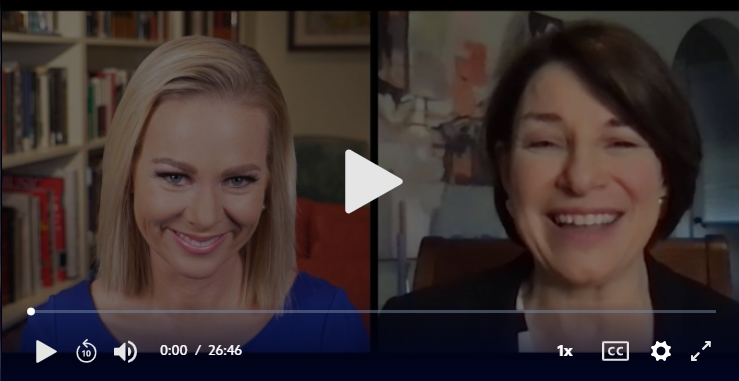
Klobuchar, wants to break up google/facebook/apple and the two other tech giants.
Everyone online needs to wonder what will happen. The sad thing about monopolies is they are rarely broken up to betterment in the industry they are in. Trains/Oil/AT&T I don't see any of the monopolies they had make the industries. The train monopoly ended with the car taking its place. Oil ended with an international set of oil barons outside the legal parameters of the usa but not the financial connection to statian firms. AT&T bought all the baby bells back except Verizon but apple and google replaced the space the baby bells were supposed to have.
I end with a simple truth, those not a monopoly want to be a monopoly and that is the true problem. I can add, when the usa outran the soviet union, all the state owned industries in russia became owned by oligarchs.
https://www.pbs.org/video/amy-klobuchar-wokbyl/ -
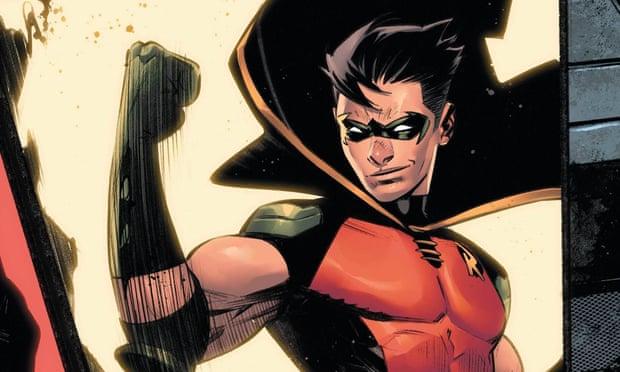
Meghan Fitzmartin has placed Robin on a sexual journey. I say this based on her words. She never said strictly Tim Drake is a member of the LGBTQ+ community. She said he is on a journey of self discovery. The endpoint does not have to be what anyone thinks.
I Quote the author in double brackets
<<
When Dave [Wielgosz] (my editor for Batman: Urban Legends) reached out about doing another Tim story, I was thrilled, ...We talked about where Tim Drake has been vs where he was at the time and came to the conclusion that it needed to be a story about identity and discovery. What was next for Boy Wonder?... Look, I don’t know if this is something that can happen, but this is the story, because it’s the only story it can be. ... I fully sat on the floor of my apartment for a solid two minutes in happiness as it sunk in. Ultimately, this wouldn’t have happened without champions at DC, like Dave and James Tynion IV, and I hope it is as meaningful for others as it has been for me. ...The greatest thing about working with an established IP, ...is that there are so many story decisions for characters that have already been made for you (often by people much smarter than you). [“Sum of Our Parts”] happened because this is who Tim is. I love this character very much, and as I went back to reread as much as I could to do Robin justice, it became clear this is the story Tim needed to tell. ... I wanted to pay tribute to the fact that sexuality is a journey, ... To be clear, his feelings for Stephanie have been/are 100% real, as are his feelings for Bernard. However, Tim is still figuring himself out. I don’t think he has the language for it all... yet.
>>
She has not written this to pabelize tim drake, even though all the articles seemed to do that.I quote the article in double brackets
<<
Kate Kane is the most prominent canonically queer member of the sprawling Bat-family. She debuted as Batwoman in 2006 in the company’s year-long weekly-TV style series 52, and immediately garnered shock headlines — even though she ultimately had a fairly minor role. Gotham City has slowly become a much queerer place since her introduction, but mostly with villains and secondary characters. The subtext of Harley Quinn and Poison Ivy was finally allowed to be text in the early 2010s. Before she (nearly) married Batman, Catwoman briefly had a girlfriend. Midnighter became a recurring supporting character in Nightwing stories. Police detectives Renee Montoya and Maggie Sawyer and the young vigilante Bluebird/Harper Row flitted in and out of continuity.
>>
I wonder, did Bob Kane leave any diaries or explicit thoughts to the world he created. I am not suggesting any artist should had been restricted. I am not suggesting any artist need to be behind a block. But, I wonder. Many artists after Bob Kane turned many members of Bob Kane's world into LGBTQ+ members, I am not certain Kane wanted that.SUB ARTICLE
https://www.theguardian.com/books/2021/aug/11/batmans-sidekick-robin-comes-out-as-lgbtq-in-new-comic
SOURCE ARTICLE
https://www.polygon.com/comics/22617395/robin-gay-queer-batman-dc-comicsMarvel and DC face backlash over pay: ‘They sent a thank you note and $5,000 – the movie made $1bn’
SUB ARTICLE
https://www.theguardian.com/books/2021/aug/09/marvel-and-dc-face-backlash-over-pay-they-sent-a-thank-you-note-and-5000-the-movie-made-1bn
PRH < Penguin Random House> and Amanda Gorman Launch Creative Writing Award for Poetry SHARE FOLKS
This year, we are thrilled to announce that we are adding the Amanda Gorman Award for Poetry to our program. This award is one of five creative writing awards given by Penguin Random House. Other categories include fiction/drama; personal essay/memoir; and the Maya Angelou Award for spoken-word. In recognition of the Creative Writing Awards previously being centered in New York City, the competition will award an additional first-place prize to the top entrant from the NYC area. Full press release here.The 2022 competition will launch on October 1. If you are a current high school seniors who attends public schools in the United States, including the District of Columbia and all U.S. territories, and are planning to attend college – either a two-year or four-year institution – in the fall of 2022, please check back in October to apply.
Contact us at creativewriting@penguinrandomhouse.com
SUB ARTICLE
https://www.publishersweekly.com/pw/by-topic/childrens/childrens-industry-news/article/87124-prh-and-amanda-gorman-launch-creative-writing-award-for-poetry.html
RULES
https://social-impact.penguinrandomhouse.com/our-awards/u-s-creative-writing-awards/Dolly Parton to publish her first novel in 2022
The country music superstar has teamed up with the novelist James Patterson to write Run, Rose, Run, which will be published in MarchI love the title
SUB ARTICLE
https://www.theguardian.com/books/2021/aug/11/dolly-parton-to-publish-her-first-novel-in-2022John Le Carré's final novel is coming in October — see the first look- I love the cover, very film noiry:)
Le Carré wrote Silverview alongside his final two novels (Agent Running in the Field and A Legacy of Spies) and left his body of work in the care of his children. This last novel will follow Julian Lawndsley as he flees the big city for a job at a bookstore in a small town; meanwhile, a London spy chief arrives to the seaside enclave to investigate a potential leak. When it hits stands, Silverview will include an afterword from Cornwell, paying tribute to his father — along with his siblings and an archivist, he's currently cataloguing all of le Carré's work.
"This is the authentic le Carré, telling one more story," his son Nick Cornwell — a novelist who writes under the pen name Nick Harkaway — says in a statement. "The book is fraught, forensic, lyrical, and fierce, at long last searching the soul of the modern Secret Intelligence Service itself. It's a superb and fitting final novel."
Jonny Gellar, the author's longtime literary agent, adds that the new novel feels like a gift left for his legions fans: "Silverview is as urgent and alive as any of his past work."
SUB ARTICLE
https://ew.com/books/john-le-carre-posthumous-novel-silverview/
BOOK PAGE
https://www.penguinrandomhouse.com/books/703350/silverview-by-john-le-carre/
I Quote the article in double brackets
<<
...
In July, the Hungarian government imposed an $830 fine on the distributor of the Hungarian translation of Lawrence Schimel’s children’s book What a Family!, citing a law that bans the depiction of homosexuality and gender reassignment in material aimed at minors. The book tells the story of two families with young children—one with two fathers and the other with two mothers.That incident follows another in Hungary, in October 2020, when a member of parliament put a copy of Meseorszag mindenkie (A Fairy Tale for Everyone), which also features LGBTQ characters, through a shredder. “So the publisher reprinted it as a board book” said Schimel, whose book had the same Hungarian editor.
...
Schimel, an American living in Madrid, has published dozens of LGBTQ-themed works for children and adults. “It’s important for all families, not just those who are LGBTQ, to see and read these books which show just how normal these families are,” he said. What a Family! is now sold in Hungary with a sticker, warning readers that it depicts families “outside the norm.” It was originally published as two books in Spanish, and Orca Book Publishers is releasing it as two books in the U.S. in September.Russia led the way in overt European LGBTQ censorship with the passage of its “anti-LGBTQ propaganda” law in 2012. Today, LGBTQ books are routinely suppressed there, and those that make it to market are sold with warning stickers.
“The campaigns by the populist governments in Europe, such as in Hungary and Poland, against the LGBTQ community are in direct violation of the principles of inclusion and the celebration of diversity,” said Michiel Kolman, chair for inclusive publishing at the IPA. He noted that in Poland, several towns have declared themselves LGBTQ-free zones, forcing LGBTQ residents to move, while in Hungary the transgender community was first targeted, and after that the broader LGBTQ community.
“The policies manifest themselves through censorship of books and other media that directly contradict the freedom-to-publish mission of the IPA,” Kolman told PW. He added that the Hungarian laws are likely an effort to deflect attention from the country’s dismal economic and Covid-19 track record.
Following the news of the attack on Schimel’s book in Hungary, the IPA, the Federation of European Publishers, and the European and International Booksellers Federation all reaffirmed their support for Hungarian publishers and readers, and their solidarity with LGBTQ communities in Hungary.
Also in July, the government of Belarus moved to dissolve the local branch of PEN after the freedom of speech organization released a report showing 621 instances of human rights violations, including arrests and imprisonments, against culture workers in the first six months of 2021. Suzanne Nossel, CEO of PEN America, was among those around the world who issued a statement in support of PEN Belarus. “When a government silences and stomps on its writers, it reveals a level of shame and decay that leaders are aiming to hide, but instead only expose,” Nossel wrote. “Belarus’ leaders may think they can suppress the truth by muzzling those who dare tell it, but the story of the will of the people and the scale of brutal repression will find its way to the world. We stand in solidarity with the writers of PEN Belarus and are determined to ensure that their vital voices are heard and their rights to express themselves vindicated.” As recently as last week, a dissident journalist from Belarus who disappeared was found dead in Ukraine.
Nossel told PW that this type of activity is an attempt by authoritarian governments to control the narrative, both at home and abroad, in a world where information is fast moving, freely available, and difficult to suppress. She cited China and the closures of bookstores and publications that express dissent in Hong Kong as particularly egregious examples of censorship. “[The Chinese] are reaching down to destroy the remnants of any challenge to their authority,” she said. “For organizations like PEN, fighting this is an ongoing battle.”
Nicholas Lemann, director of Columbia Global Reports, a publisher that offers short books on hot political and social justice topics, noted his house has been vigilant in covering the rise of authoritarianism, the curtailing of press freedoms, and China. In May, Columbia Global Reports published The Politics of Our Time by John Judis, a one-volume contemporary history of populism, nationalism, and socialism.
Lemann, the former dean of the Columbia School of Journalism, said he routinely gets reports from former students about the rise in persecution of journalists. “In recent years, I have heard more and more often from journalists in India about Narendra Modi and in Brazil about Jair Bolsonaro and what they are doing to limit press freedoms,” he noted. “At the turn of the millennium, we thought that the triumph of the American economic system inextricably went along with the triumph of the American freedom of expression system. And we thought these would be globalized. Well, that didn’t happen,” Lemann said.
It has long been known that the Chinese government keeps a close eye on which books are distributed there and maintains control of the issuing of ISBNs. Officially, censorship is not a state policy. Publishers have long held that if a book does not become too popular or influential in China, it will be tolerated. But unofficial policy is flexible, and recent trends have shifted toward a narrowing of what is considered acceptable. For example, there’s been a crackdown in recent years on what can be published on China’s wildly popular writing websites, such as China Literature, and works that are deemed too “salacious” have been removed. Last year, Fang Fang, who lives in Wuhan and published a blog about the early days of lockdown during the pandemic, was vilified by the government. Her blog entries were collected into the book Wuhan Diary, published by HarperCollins.
In July, the Chinese government outlawed foreign direct investment in education companies. The law is aimed at companies that offer tutoring to Chinese students—a business that has ballooned to an estimated $100 billion per year. The law is likely to impact numerous foreign education publishers that have invested hundreds of millions of dollars in the sector. “The government is operating with the idea that liberal Western ideas may be damaging the children,” Nossel said.
Different countries have different means of controlling book publication and exerting censorship. In Turkey, authorities require that any book sold in bookstores has a government “banderol”—a sticker testifying to its “authenticity.” The government claims this is necessary to combat piracy, but in effect it acts as a means of regulating publishers.
In Venezuela, officially, publishers can publish anything—but they may not be able to acquire paper and ink to print certain books. The same happens in Russia, where a printer might suddenly become reticent to produce a potentially objectionable book for fear of government blowback.
IPA fights for the freedom to publish
The IPA maintains a committee that monitors freedom-to-publish issues around the world and presents an annual award, the Prix Voltaire, honoring courageous publishers that have faced oppression. To reinforce its mission to support global publishing during the pandemic, the IPA also recently launched a program to promote publishing, dubbed INSPIRE (International Sustainable Publishing and Industry Resilience). Two of the tenets of the program’s charter are maintaining that “freedom to publish is a prerequisite for diversity, creativity, prosperity, tolerance, and progress” and that “copyright and freedom to publish are mutually reinforcing fundamental rights that are essential to the practice and preservation of political culture, education, scholarship, and socioeconomic development.” The charter has garnered signatures from more than 100 organizations around the world, including Publishers Weekly.
“Many countries have introduced special laws to deal with the Covid-19 crisis,” said Kristenn Einarsson, chair of the IPA’s Freedom to Publish committee and former managing director of the Norwegian Publishers Association. “There is a growing concern that these might be maintained in the future, after the crisis has ended, and that some of them could be used to limit the freedom to publish and freedom of expression.”
Einarsson said in some authoritarian states, censorship can be internalized and become self-censorship. “The same fears that can affect publishers and lead them to self-censor can also infect authors, booksellers, and librarians. In the end, if these fears delay or stop the creation or publication of such reports and works, then it is we, the readers, who are deprived. Any discussion about what should be published is of course welcomed, but it is important that publishers stand firmly to defend the publishing of all that they deem worthy of publication, even—and perhaps especially—if those works challenge the boundaries established by the society they operate in.”
>>MY thoughts... first, governments do have the right to ban anything. all governments ban artistic content. all governments. Sequentially, suggesting any government is bad or criminal based on banning requires all governments in humanity to be imprisoned. But, communities require rules. Individualism has functional limits when one does not live alone, and each human or humanity has never been alone on earth.
Schimel's point encapsulates the problem. In most communities in humanity, the entire LGBTQ+ experience as a collection of communities or in parts is not common or public. Artist like him who want to make the activities public or common in the collective mindset have an automatic enemy in those who do not. In any community where most do not, opposition grows to where people have lgbtq+ free zones. In the usa, I don't recall any publicly touted lgbtq+ free zones.
The problem with the word populist is it means of the people. IF a government in populists and you dislike its position. You are stating you want the position that most people have under a government to be opposed. If Majority doesn't rule then who does? If minority rules, how long will the majority allow before extreme violence hits?
I wish people will stop using sars-cov-2 for everything. Every country that is doing something someone does not like is referred to in media as doing it because of the sars-cov-2 in some fashion. I wish modern media will kill that interpretation.
One thing I learned in the Ken Burns vietnam war documentary on PBS was that during the 1960s the polls was in favor of staying in the vietnam war. What is my point? Modern media makes it seem like most people didn't want to be in the vietnam war. But that is a lie. The problem with many governments in humanity is global media, global media defined as media between countries, is dominated by the usa and creates a narrative that most of the people in a country are opposed to the actions. Are most people in china, opposed to the actions by the chinese government toward HOng Kong? I don't know. I am not suggesting I support or oppose the chinese governments actions. But, I know I am not certain they are not what the majority of people in china want. And again, if the majority isn't in control, then the minority is, and how long will the majority be nonviolent to the in control minority? If the majority is in control then... what is wrong? If ninety-nine people are happy and one is not. The one person can't be in control over the other 99. The one person has to leave if they want things their way, or eat crow.
Nicholas Lemann need to define who is we, when he said :"we thought that the triumph of the American economic system inextricably went along with the triumph of the American freedom of expression system. And we thought these would be globalized. Well, that didn’t happen"
We didn't include the native american. We didn't black folk in black towns in the usa. If anything, Lemann proves why people like him failed, cause people like him assumed his agenda was similar to other people. Second, Lemann has to describe what the Statian economic system is. The USA financial model is simple. Kill a people for their land, enslave a people for their labor, and then maintain a system to maintain wealth in your community. He talks about freedom of expression. But if most black people, native americans, women in the usa circa 1865 couldn't read or write then outside talking who was expressing anything? Most of said people did not have the money<fiscal poor> or time<laborer> or situation<prison> to be at a pulpit. Lemann is wrong, Statian economic system or system of expression did become globalized. People like Lemann was confused as to what the usa was exporting.The USA is the king of using unrelated things to cover agendas. Freedom was the cover for the financially profitable drugs or arms trading zone called vietnam. Improvement of non white europeans or peace in the USA was the cover for white financed negative anti native education camps called boarding schools for native american children or the white financed colleges or associations that were fiscal class covens for black people who demand nonviolence to all in the black community against all other black people. Sars-Cov-2 is the cover for an agenda of raising the cost of living, or making media more narrower through streaming channels, deemed as the best activities to keep people safe from a virus that only a person living in a viral blockading suit can be.
SUB ARTICLE
https://www.publishersweekly.com/pw/by-topic/international/international-book-news/article/87097-censorship-on-the-rise-worldwide.html
International Publishers Association report "Freedom to Publish: Challenges, Violations and Countries of Concern"
https://www.internationalpublishers.org/images/aa-content/ipa-reports/State_of_Publishing_Reports_2020/Freedom-to-Publish-Challenges-violations-and-countries-of-concern.pdfGoodreads Ransoms, LGBTQ+ Robin, and Dolly’s Debut: This Week in Book News
MAIN ARTICLE
https://kobowritinglife.com/2021/08/13/goodreads-ransoms-lgbtq-robin-and-dollys-debut-this-week-in-book-news/
-
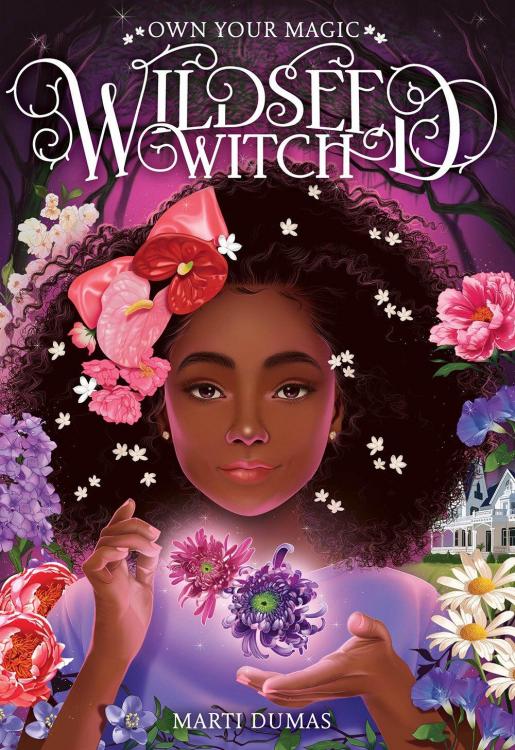
She just looks so cute!!
Author: MArti Dumas
Coverart: Erick Davila
Publisher: abramsbooks
Book
https://www.abramsbooks.com/product/wildseed-witch-book-1_9781419755613/
Author
https://twitter.com/MartiAndreDumas/status/1425835924131246087 -
my favorite cover is the heart man, i even like the title, i can see that as the movie poster. ... based on synopsis the most interesting for me is the life and death in paradise, which I think is a good title also. I can see #LDIP , I am a unashamed , unapologetic:) lover of film noir, old cheesy classic style , so the cops and robbers world they allude to speaks to the camp I accept most:) what about you? your favorite cover or interesting synopsis?
Founded in 2011 on the sunbathed tropical island of Barbados, Beyond Publishing Caribbean was created by a coalition of passionate Caribbean artists and writers, themselves fans of comics, movies, anime, and books. It was established to be a platform for local and regional talent and creativity, with the agenda of advocating and popularizing their works under one banner. Brimming with a wealth of ideas and artistic acumen, Beyond Publishing comics highlight and incorporate Caribbean history, heritage, and culture in a variety of ways and genres.
From humble beginnings, Beyond Publishing has seen members come and go; and despite ongoing and daunting challenges, they remain resolute in their goal of producing quality comics with a distinct and authentic Caribbean flair. This avid commitment shared by its members over the past decade has resulted in progressive exposure on an international scale. Even with its small library of titles, the full breadth of its illustrative and narrative prowess is on display in every issue. Some of their prominent titles include:
READ MORE IN THE ARTICLE BELOW
https://blacksci-fi.com/beyond-publishing-a-caribbean-milestone/ -
MAry j blige plays dinah washington,Blige is a little more chunkier but great vocal choice since they are singing all the songs. Marlon wayans may finally play another role his sister or I can watch with him. ... I think one of the most amazing things about the otis redding song is how, aretha franklin did something many black musicians did through the years, still continue to do, ala every breath you take being turned into a mortuary song. But she did it the best. She proves with her rendition of respect how underrated the way one produces an artwork gives them ownership. A person has to compose a song/write lyrics, but she proves with respect that the singing of a song is unique enough to warrant ownership. A point I think is underrated. And i know it is not legal cannon, but I think it is true musically. What would the usa anthem be without black singers? ... to the time period, ray charles/johnny cash/aretha franklin/i am forgetting the white female musican's name, the coal miners daughter, but they all came up at a time where the music industry was starting to lose its financial form from the 1800s. The days of ma rainey's black bottom where all musicians received nothing for their work was ending.
https://www.latimes.com/entertainment-arts/movies/story/2021-08-06/jennifer-hudson-aretha-franklin-respectHow Jennifer Hudson found new ‘Respect’ for Aretha Franklin in the role of a lifetime
BY LORRAINE ALITELEVISION CRITIC
AUG. 6, 2021 9 AM PT
Jennifer Hudson knew she had her work cut out for her when she agreed to play the Queen of Soul. “You just can’t wake up one morning and decide ‘I’m gonna be Aretha Franklin,’” said Hudson. “I mean, her voice. Her legacy. The songs. Who she is to all of us. It was daunting. There were times when I was like, ‘Jennifer, what have you done?’”The answer is “Respect,” the highly anticipated biopic sanctioned by Franklin, who handpicked Hudson for the role before her death in 2018. The film chronicles the late singer’s rise from her father’s church choir to international stardom, shining a light on the talent and the stories behind the songs.
“‘Respect’ is the song and the hit we all love from the gifted Aretha Franklin,” says Hudson. “But when you add her life narrative around it, it’s that much more powerful. Understanding the era she grew up in and the courage that she had and her activism. Her relationship with Dr. King and Angela Davis. It’s like, wow, you see all sides of the human and the way she used her art to reflect herself and support others and be an advocate. So now it’s more than just the song. It’s more than just the artist. Knowing her history helped me understand her legacy and understand why her impact has been so great.”
The film, which hits theaters Aug. 13 after decades of planning and a year of COVID-related release delays, moves from Franklin’s religious upbringing with the charismatic but controlling Reverend C.L. Franklin to her hard-won stardom of the 1960s to a spiritual return to gospel music with her highest-selling album ever, 1972’s “Amazing Grace.”
Rather than lip sync to pre-recorded tracks, Hudson belted out The Queen’s material live on set during filming (“Aint No Way,” “Chain of Fools,” “Think”) as did the rest of the cast — which includes Tony award winner Audra McDonald portraying young Aretha’s mother and Broadway talents Hailey Kilgore and Saycon Sengbloh playing her sisters Carolyn and Erma Franklin (the women’s harmonizing alone is worth the price of admission).
But Hudson is a singular force. The former “American Idol” contestant, who like Franklin grew up singing in church, emotes with the same passion that won her an Oscar for 2006’s “Dreamgirls,” using her powerhouse vocals to re-create iconic moments in music history including the birth of Aretha’s own sound in Muscle Shoals’ Fame studio and a knock-‘em-dead performance of the film’s namesake at Madison Square Garden. With Hudson and other music-minded folks on board, “Respect” is the rare biopic where the celebrated artist’s compositions also land a starring role.
“I wanted to make a movie where music was front and center,” said director Liesl Tommy. Known for her work on Broadway, including her Tony-nominated direction of the play “Eclipsed,” “Respect” marks Tommy’s first time directing a feature film. “Aretha was capable of so much power when she sings and so much delicacy and nuance. I wanted the way that we feel listening to her music to be the way that we felt watching the film. Another thing that guided me is that she has so much emotion in her singing. I felt that the film should be emotional too because that’s who she was. And even though she was very protective of her private life, her private life is all over her music.”
Written by Tracey Scott Wilson (a playwright who has also written for TV series including “The Americans” and “Fosse/Verdon”), “Respect” stars Forest Whitaker as Franklin’s father, Marlon Wayans as her husband and manager, Ted White, and Tituss Burgess as the gentle Reverend Dr. James Cleveland. Mary J. Blige plays diva Dinah Washington and Marc Maron is pushy Atlantic Records exec, Jerry Wexler.
“Respect” follows in the footsteps of other biopics, such as “Coal Miner’s Daughter,” “Ray” and “Walk the Line,” that dared to tackle the legacies of treasured singers. And as American icons go, Aretha is right at the top. .
The pressure of portraying her was not lost on Hudson. “I was calm on set. The freakout came later,” said Hudson recently while in Los Angeles to promote the film. She arrived to the interview wearing a necklace that spelled out “R.E.S.P.E.C.T” in gold letters. She had it made as a memento of the film because “it’s not every day you get to be the Queen of Soul,” she said, slipping on pink, fuzzy slippers after shedding a pair of deadly high stilettos she donned for a photo shoot.
Hudson worked with acting and dialect coaches for the role, and she turned to the legendary Patti LaBelle for insight into the experience of Black female artists in the 1960s. “They had a lot less freedom and women took up less space” says Hudson. “Ms. Franklin spoke up with her music.”
Hudson took her job seriously, learning to play piano for the role: “I’m really still trying to get’ Dr. Feelgood.’ I got the piano part, but now I’ve got to figure out how to sing it while playing it. It’s a process.” Slipping into fabulous reproductions of Aretha’s wardrobe was easier, though Hudson counted 83 costume changes and 11 different wigs (the beehive was her favorite). “And I loved her clothes in the birthday scene. She’s wearing a gold dress and a big fur. I couldn’t help but feel royal.”
Hudson grew up in 1980s Chicago worshipping Whitney Houston, but by the time she auditioned for “American Idol,” her song of choice was Franklin’s version of “Share Your Love With Me.” Even the jaded Simon Cowell was impressed (still, she lost the competition in 2004 when she came in seventh). But Hudson’s personal associations with The Queen’s catalogue had its disadvantages when she was prepping for the film.
“Playing her is a completely different thing from being a singer and fan who sings her songs,” said Hudson. “I mean, thank God I already knew the majority of her material. That was one less thing I had to worry about. But I remember saying on the set, ‘She doesn’t know this song yet.’ Jennifer Hudson knows the song. We all know the song. We know what it became. But in Aretha’s life, in that moment, she doesn’t. She’s learning it. It hasn’t manifested yet. We can’t overshoot the story and speak of her as who she became because we’re in the beginning phases of the making of Aretha.”
Tommy said she too had to break from her own personal associations with Franklin’s work in order to approach the story with a fresh perspective. “When you listen to music and there’s a song that you love, you’re bringing yourself to that,” said Tommy. “It’s like it becomes your personal soundtrack and it’s about your life. So there’s a detaching from how I felt when I was 8 years old that I first heard ‘Natural Woman.’ It’s not about me sitting in a window looking at the rain. It’s something else. You just have to give over to her and her story and her history and that was the great joy of this — discovering the music in a brand new way.”
Tommy and Wilson did extensive research into Franklin’s life to ensure the film was as accurate as possible, from her pregnancy at age 12 to her plight in the studio as the only female musician to her friendship with the Reverend Martin Luther King Jr. For the religious and gospel references, it helped that Wilson’s father and grandfather were Baptist ministers.
Franklin herself had also reportedly been involved in the planning of her biopic up until a week before her death, and more recently, her family and estate made themselves available to the filmmakers. The scenario was quite different for another recent television biopic, National Geographic’s four-part limited series “Genius: Aretha,” which earned an Emmy nomination for star Cynthia Erivo but was blasted by Franklin’s family for its apparent inaccuracies.
“[Franklin’s family] really trusted us, which is a great gift,” said Tommy. “I will never stop being grateful to them for how they sensed our care and sensed that we were two Black women who would die before we let anything not be right in this film. ... In the past, these stories about Black people were pretty often written and directed by white men. Aretha was so real. She was so authentic. I wanted this film to feel like it was undeniably her world and it wasn’t from some kind of voyeur’s perspective. It was from a lived-in perspective. It was really important that her realness be present inside of the film.”
Hudson met Franklin when both women were doing what they loved best: performing on stage. “I got to open up for her in Merrillville , Ind. in 2003 at one of her concerts,” says Hudson. “It was like, ‘Oh my God, I get to sing at Aretha Franklin’s show. She allowed me to do this!’ That was a moment in itself. And then after I won the Oscar for ‘Dreamgirls’ [in 2007] we had a meeting about the possibility of me [portraying] her. ... Years later she called me when I was doing [the Broadway revival of] ‘The Color Purple’ and she said, ‘I’ve made my decision on who I want to play me. It is you. Don’t say anything to a soul.’ And I’m like, ‘Yes, ma’am. I won’t.’ Now here we are. It was like holding my breath for 15 years.”
During that time, Hudson has released three albums, appeared in countless TV series and films (“Sex and the City,” “Empire,” “The Secret Life of Bees,” “Cats”), did Broadway and had a son with professional wrestler David Daniel Otunga. She also overcame the 2008 murder of her mother, brother and nephew by her sister’s estranged husband. Hudson has said she made it through the tragedy thanks to her faith.
The church is embedded in Hudson’s soul. And apparently, so is Franklin’s influence. “I didn’t realize until researching and even shooting ‘Respect’ that ‘Amazing Grace’ and ‘Precious Little Words,’ songs from her ‘Amazing Grace’ album, they were the same versions I grew up singing in church. I was brought up in a church too. We sang ‘Amazing Grace’ every Sunday. But to learn it was her renditions, it’s like wow. So she’s always been there.”
Hudson sang “Amazing Grace” at Franklin’s funeral, 50 years after Franklin sang “Take My Hand, Precious Lord” at King’s memorial. “She was courageous enough to take a stand,” says Hudson of Franklin’s involvement in the civil rights movement. “She used her platform to respond to the times. She fought so hard to get there, and that could have taken her down, but she did it. She left us an example — for us to keep pushing. That’s what got me through this whole thing — her saying, ‘Jennifer, go on.’ I’m like, ‘I don’t know if I’m as courageous as you, but if you think I can, I’m going to give it a try.’”
-
Well... it is another Friday, another day to love, to Oxum, Oshun, Freya, or Venus, another day to Kizomba!
This couple, Ebo and Nana are smooth in their movements; they are not pure kizomba and love the half turns and pops. BUT, they cognize in their dancing that Nana has a rare body and accentuating it in the routine is positive. I think one issue is Ebo has to gain more upper body strength. Nana has the best or at least top three bodies for a female for profit dancer in my kizomba fridays <yes, it is not just aesthetic, it is her fitness, she is very flexible and strong in her movements, especially the little ones, which can be harder when you are thickbone or not petite in general>.
check out 0:36 (the walk) 0:50 (leg overs) 1:14 (camera is in a bad positon but a nice heel carry) 1:40(nice half turn-clearly latin american but nice nonetheless) 2:25- 2:53 (best sequence in it, <the best:)> and truly kizomba, very nicely done, nana is easy to show off, very good as a partner) 3:25 (nice end, a little broken but nice) -
These were two invitationals on deviantart, the artist who started them are on twitch, i put the time index for my entries:)
Ilati
29:03
https://www.twitch.tv/videos/1103024387OC meme challenge
51:48
https://www.twitch.tv/videos/1104184895 -
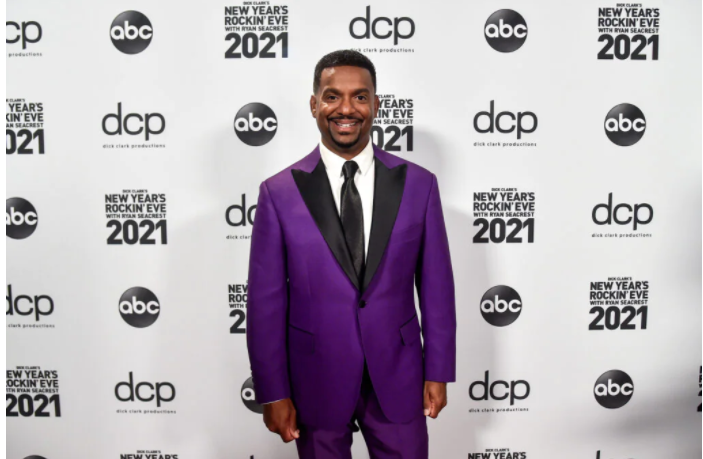
Alfonso Ribeiro is wrong. His blackness is not challenged. The problem is the Descendent of Enslaved black community in the usa , which is the largest tribe in the black community in the usa has an over 150 year old strategy that doesn't fit most situations or people in the black community.
The strategy is the following: adhere or advocate to non violent aracial peaceful integration side all humans WHILE adhere or advocate a pro black unity or superiority.
The problem is you can't do both. I rephrase.
You can't say, Everybody is equal plus Black is better than everybody else, in the same breath.
https://thegrio.com/2021/08/01/alfonso-ribeiro-blackness-challenged/ -
100 Literary Jeopardy Clues from Real Episodes of Jeopardy!
By Emily Temple
https://lithub.com/100-literary-jeopardy-clues-from-real-episodes-of-jeopardy/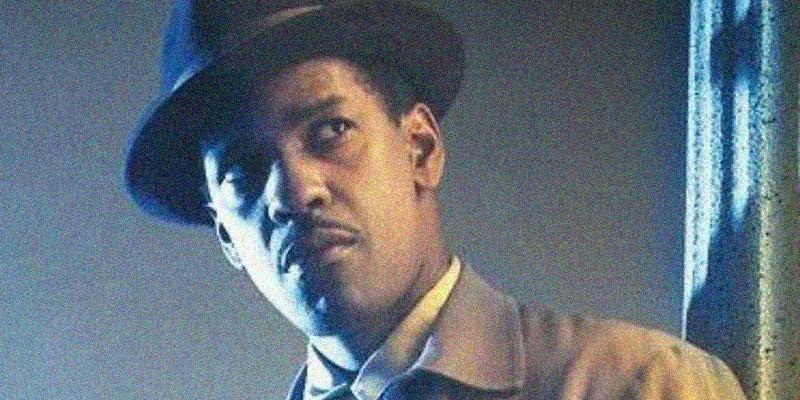
THE PI OF COLOR: WHEN IT’S ABOUT MORE THAN THE CRIME
JUNE 29, 2021 BY TRACY CLARK
"I had to acknowledge that diverse characters, in whatever genre, straddle a fence. One side of the fence represents who they are, the other represents how society sees and accepts them."We all know the PI. You need only rattle off the names—Spade, Hammer, Marlowe, Archer—to conjure the picture. Tough, swaggering, fast-talking, busted nose, cigs, that Webley–Fosbery revolver.
They’re Bogie-like, usually, men sure of themselves and sure of their place in the world. They stand firmly at the top of society’s pecking order, even though they ply their shadowy trade by night, solo, down near the docks or in a dive bar, soaked in gin and regret.
But, thankfully, the world has grown a li’l bit since Hammett set Spade off in pursuit of “the bird.” The PI has grown up, too, broadened a bit. He, or she, is not as solitary, a lot of the gumshoeing is done from the comfort of their swivel chair, the gin is artisanal, not every last one of them by default looks like Bogie or Dick Powell.
More writers of color are writing PIs of color, which might explain the broadening. These non-Marlowes feel deeper, rounded, they’re often more complex than their Coolidge-era counterparts. And when these characters hit the page, they’re hitting it hard, bringing their communities, their identities, their unique perspectives on the world right along with them.
Here are the tropes for the classic PI. He’s an outsider scarred by life. He has his own code of ethics, often questionable. He doesn’t play well with others and wears sardonicism like a cheap suit. This guy fights the good fight, but he’s not above fighting it dirty. He defends the damsel in distress, thinking she’s Penelope Pitstop when she’s really Ursula, the sea witch. He’s a little thick, this PI, but he’s not dumb.I was instantly drawn to the genre, I think, by the sheer stubbornness of all those slippery tecs. You were never quite 100 percent sure if they were good guys or bad ones, but I liked their tenacity, their bullheadedness. You could beat the stuffing out of a PI on Monday and Tuesday, and he’d be back bright and early Wednesday with a brace on his nose, talking smack, like he just KO’d Joe Louis.
When I sat down to write my PI, Cassandra Raines, I borrowed some of those tropes. She’s a bit of loner who doesn’t play well with others. She has her scars and flaws, which have been exciting to poke at as the series has progressed. She is headstrong, relentless, unapologetic, an outsider who thumbs her nose at authority, like a good PI should. I stopped short of the busted nose (I cringe just thinking about it). But when I made her Black and female, I was also acutely aware that I had firmly locked her into a specific worldview and had rooted her in a rich community. I knew that she would come to the page much differently than Spade came to Hammett’s. She would have to be an outsider by virtue of her profession but also by virtue of her sex and race. She was a woman in a man’s world, a Black woman in a society that looked at her as “other” everywhere but where she came from, regardless of how competent or intelligent I made her.
As a reader I can certainly put myself in Spade’s shoes, or Archer’s, and go along for the ride, but I know those shoes weren’t meant for me. My realm and theirs were worlds apart. So, as a writer, I created a PI that looked like me, who shared some of my experiences. I planted her in a community with the kind of people I was familiar with and gave her a place to live that looked and felt and sounded like the one I knew. Marlowe was great as far as Marlowe went, but I wanted my PI to “represent.”
Here’s where it got tough. What did that mean? What would representation even look like on the page? I didn’t want her to move through my book world having her race be the most defining thing about her. Who leaves their house every morning with a bullhorn and a proclamation on their lips? But her race isn’t an insignificant thing either. Could I tip a hat to the old PI, acknowledge the archetype, and then re-shape it so that it made sense for Cass?
I could make her capable, hard-driving, indefatigable. I could make her snarky like Spade, but I had to acknowledge that diverse characters, in whatever genre, straddle a fence. One side of the fence represents who they are, the other represents how society sees and accepts them. Cass has a foot planted firmly on each side of that fence. She’s a Black woman in 2021 up to her neck in “isms.” In contrast, Spade traveled around in a society that worked for him, one that was set up to work just that way. Things work differently down Cass’s way.
Justice, in principle, in execution, looks different to Cass than it does for Archer or Marlowe. Right and wrong might not be so black and white. Cass would understand the backstory on issues like grinding poverty, mass incarceration, the role of policing in black and brown communities, rampant homelessness, the ravages of drug addiction and the damage all these things cause to families and the home place, because she’s there where all this plays out, she’s in it. I can’t see any of those other fellas giving any of that all that much thought.
Where Cass comes from, Marlowe would be “other.” Marlowe may walk Cass’s streets, but he cannot know them like she knows them. The reverse is also true. But the fact that we now have stories about Cass’s streets and not just Marlowe’s is the change. A reader can now see things through a different set of human eyes. This change in perspective, in the way Cass thinks, based on who she is and what she knows, colors how she deals with the people she encounters. A junkie may be just a junkie to Marlowe; Cass may not think of addiction as a personal failing. Understanding goes a long way toward humanizing a character.
I didn’t invent this wheel. Writers of color have been writing PIs of color for decades. Take Rudolph Fisher’s “The Conjure-Man Dies” (1932), credited with being the first detective novel by an African-American author, or Chester Himes’s Harlem cycle of the ‘50s and ‘60s. Today, we have Walter Mosley’s Easy Rawlins and Gary Phillips’s Ivan Monk, Steph Cha’s Juniper Song, Rachel Howzell Hall’s Grayson Sykes, Cheryl Head’s Charlie Mack, Delia Pitts’ SJ Rook, Stephen Mack Jones’ August Snow. Black, biracial, Korean-American, male, female, straight, gay, each character is firmly planted someplace. Through their eyes we see a Detroit, Harlem, Los Angeles not many see and meet people we might never otherwise meet. No one knows these places, these people, better than the writers who write about them.That knowledge, that familiar base, is important. Mosley’s Easy Rawlins comes out of the Watts area of L.A. Easy knows Watts better than Spade would know it. Alex Segura’s Cuban-American detective Pete Fernandez has Miami covered. Marlowe couldn’t know Miami as well as Pete knows it if he crammed for a thousand years. Spade would be lost in Cass’s Chicago, too, and I’m sure that if she encountered him there, she’d do all she could to ditch him in an alley. Who wants a swaggering Bogie-type trailing behind her? He’d stick out like a sore thumb!
In the end, I decided Cass didn’t have to represent, all she has to do was be. She lives on the page like most of us live off of it, matter-of-factly, eschewing the soapbox, the waving banners, quietly getting the job done. The story, like the play, is the thing (to paraphrase a line from Hamlet), and as I write her, I pair her toughness with empathy and her intelligence with compassion. The fence is not going anywhere, not for her, not for the other PIs, not for the rest of us out here in the real world. But there’s drama gold in the way she and all the non-Marlowes straddle it, and my job is to tell the truth about it.
So, the PI, yes, but not the old PI. Make fair use of the classic tropes? Why not? Who doesn’t like a good double-cross? But there’s a whole new world out there full of non-Marlowes now. Why not follow them home and see what they’re about?
https://crimereads.com/the-pi-of-color-when-its-about-more-than-the-crime/
Hungarian authorities have fined the distributor of a children’s book featuring same-sex parents.
By Walker Caplan
Hungarian authorities have fined the distributor of a children’s book for its depiction of homosexuality. The book in question, a two-part Hungarian translation of Early One Morning and Bedtime, Not Playtime! by Lawrence Schimel, portrays the daily routines of two children, who each have same-sex parents.
...
https://lithub.com/hungarian-authorities-have-fined-the-distributor-of-a-childrens-book-featuring-same-sex-parents/MAIN ARTICLE
Delayed Discovery, Online SDCC, and Literary Jeopardy: This Week in Book News
https://kobowritinglife.com/2021/07/09/delayed-discovery-online-sdcc-and-literary-jeopardy-this-week-in-book-news/ -
Will Marlowe help you think differently about A.I.?
By J.D. Lasica
a couple of years ago a group of bestselling fiction authors got together with Dr. Matthew Jockers, co-author of The Bestseller Code and a pioneer in machine learning. The result was Authors A.I., a venture with the heady goal of using A.I. for good – namely, helping authors improve their storytelling, gain more readers and sell more books.
https://kobowritinglife.com/2021/07/22/will-marlowe-help-you-think-differently-about-a-i/ -
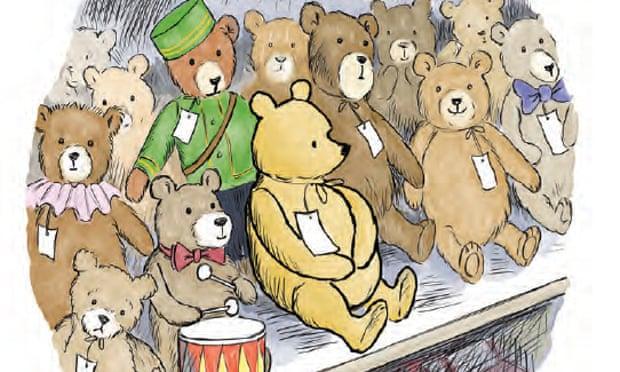
Winnie-the-Pooh goes to Harrods in new authorised AA Milne prequel
from Sian Cain
The story of how Winnie-the-Pooh went from a Harrods toy shelf to the home of Christopher Robin and the Hundred Acre Wood is set to be told for the first time, in an official prequel to AA Milne’s original stories.
Winnie-the-Pooh: Once There Was a Bear has been written in the style of Milne by children’s writer Jane Riordan, with illustrations by Mark Burgess emulating the original drawings of EH Shepard. It is the first prequel to Milne’s books and poetry about the bear, and has been authorised by the estates of both Milne and Shepard.
It will contain 10 stories just like Milne’s two Pooh story collections, Winnie-the-Pooh and The House at Pooh Corner, and will see the beloved bear exploring the London department store where Milne purchased the original toy bear for his son Christopher Robin, in 1921.
The book will also see Winnie-the-Pooh visiting London’s Natural History Museum and London zoo, where he will meet his namesake Winnipeg, a Canadian black bear. In the 1920s, Milne and his son visited the real Winnipeg at London zoo, where she had been kept since her owner, a Lieutenant Colebourn, was posted to France with his regiment during the first world war. Christopher Robin loved Winnipeg so much that he renamed his toy bear Winnie.
Riordan, who has previously written two standalone Winnie-the-Pooh stories in the voice of Milne, said the prequel was inspired by the real life of Christopher Robin.
“There is a lot of history that we know, so a few stories came to me very quickly. I was very keen to do a story in Harrods because we know the original toy came from there. We know Christopher Robin loved visiting London zoo to see Winnipeg. And I wanted to take all of the characters back to the Hundred Acre Wood, because that is what readers will expect – in the later parts, we leave London and head to the woods, where we meet Owl, Rabbit and other favourites.
“It is such an honour to be given the opportunity to write in the voice of a writer I admire so much,” she added. “He had an amazing gift for words, so it is very daunting to live up to that expectation.”
Since then, Milne’s stories have never been out of print. “I suppose that every one of us hopes secretly for immortality,” Milne wrote in 1926, just before Winnie-the-Pooh was published. But once Now We Are Six and The House at Pooh Corner were in shops, over the following two years, Milne became a very reluctant celebrity alongside his son. As a child, Christopher Robin responded to fan letters with the help of his nanny, but both father and son came to resent their fame. “I feel that the legal Christopher Robin has already had more publicity than I want for him,” Milne wrote. “I do not want CR Milne to ever wish that his name were Charles Robert.”While Disney has owned some rights to use of the character since the 1960s, Milne’s estate retains all rights to his original books. Disney has had no part in the new volume.
Two authorised sequels have been published previously, in 2009 and 2016: Return to the Hundred Acre Wood and The Best Bear in All the World.
The Sound of My Inbox The financial promise of email newsletters has launched countless micropublications — and created a new literary genre.
By Molly Fischer
https://www.thecut.com/2021/07/email-newsletters-new-literary-style.htmlTHE RISE OF MUST-READ TV
How your Netflix habit is changing contemporary fiction
By Alexander Manshel, Laura B. McGrath, and J. D. Porter
Illustrations by Vanessa Saba
If you want a preview of next year’s Emmy Awards, just take a walk past your local bookstore. According to data drawn from Publishers Marketplace, the industry’s clearinghouse for news and self-reported book deals, literary adaptations to television have been on a steady climb. The site has listed nearly 4,000 film and television deals since it launched in 2000, and both the number and proportion of TV deals have increased dramatically in that same period. Last year, reported TV adaptations exceeded film adaptations for the first time ever.
All of this has had a profound effect on the literary world. As you might expect, becoming a TV show increases a novel’s popularity enormously. Adaptations can drive book sales, as in the case of this winter’s breakout hit Bridgerton. The Regency-era bodice-ripper is not alone: A number of backlist titles, such as The Queen’s Gambit, have enjoyed a late-in-life revival thanks to Netflix’s attention.MAIN ARTICLE
Scribd Public Plans, A New(sletter) Literary Genre, and Jane Austen’s Family Recipes: This Week in Book News
https://kobowritinglife.com/2021/07/23/scribd-public-plans-a-newsletter-literary-genre-and-jane-austens-family-recipes-this-week-in-book-news/ -
August dates
- August 1st : sun between mercury and earth ; Colorado 28th state in the USA; Traditional midsummer day, between the June solstice and the september equinox, what are your dreams this midsummer?
- August 2nd : Moon , south to north of the path of the sun in the sky < Ecliptic> ; Moon farthest from earth < apogee> ; Saturn 180 degrees from the Sun in the sky <look to the horizon with the sun to your back>
- August 5th: Moon highest above the equator <rise high>; 1st USA federal income tax 1861 <imagine that>
- August 6th: Alexander Fleming <Penicillin> born 1881; Transfiguration of Jesus for christians
- August 8th: Mercury Moon conjunction; New Moon; First Muharran at Sundown <lunar calendar> for muslims, no warfare is allowed
- August 9th: Mars Moon conjunction
- August 10th: Smithsonian institute established 1846; Missouri 24th state 1821
- August 11th: Venus Moon conjunction; St Clare of Assisi saint day for christians
- August 12th: moon on equator
- August 13th: H.G. Wells died 1946 <The Time machine/Invisible Man/Island of Doctor Moreau/War of the Worlds>
- August 15th: Walter Scott born 1771 < Ivanhoe!> ; Yom kippur begins at sundown for jews <lunar calendar> First quarter
- August 16th: Moon north to south of path of the sun in the sky <ecliptic>;Klondike gold rush started 1896
- August 17th: Moon closest to earth <perigee> ; Cats Night begin. Eight nights before a witch can turn into a cat, but on the ninth night she can not change back. She has nine lives Enjoy my poetry for Cats Night-> .https://aalbc.com/tc/blogs/entry/261-good-news-blog-stories-through-a-year/page/2/?tab=comments#comment-943
- August 18th: Moon lowest from Equator <rides low>
- August 19th: Mercury Mars conjunction; Pluto moon conjunction; Uranus is still in the sky; Jupiter is 180 degrees in the sky <Look to the horizon with the sun to your back>
- August 20th: Saturn Moon conjunction; Strowger firm applied for 1st rotary telephone patent 1986
- August 22nd: Ray Bradbury born 1920, I quote him "Libraries raised me... I couldn't go to college, so I went to the library three days a week for ten years" Submit a story using three random things, solid/liquid/gas/electromagnetic in the room where you sleep, utilizing a book in some fashion in the story.
- August 22nd: Full Sturgeon moon, go fishin!
- August 23rd: Neptune Moon conjunction
- August 25th: Moon on equator
- August 28th: Uranus Moon conjunction; John Herbert Chapman born 1921, lead designer for the first satellite of canada, studying the ionosphere, named the Alouette <little duck> 1962; St Augustine of Hippo, saint day, died on august 28th in legend, revered by a pan-christian denomination
- August 29th: Moon farthest from earth <apogee>
- August 30th: Moon south to north of the path of the sun in the sky < ecliptic> ; Vicki Keith 1st person to swim across all the Great Lakes 1988
-
My Ilati DTIYS submission- if you are on deviantart give it a like:)
https://www.deviantart.com/hddeviant/art/Ilati-Submission-887229522?ga_submit_new=10%3A1627611971
The calligraphed text is from the complete poem belowA lioness is not a wife to a lion
She is an unbound oman who choose a man to create and raise kin side
Ilati is wild
Shamhat was not a wife to Enkidu
She cried to the future life, he cried while a living patricide
Ilati is wildTitle: Root to Ilati
A lioness is not a wife to a lion
She is an unbound woman who choose a man to create and raise kin side
Ilati is wild
Her forebear Enkidu cried
Enkidu at Death door
Enkidu cursed immortal desire
Enkidu lamented knowing he will die
Her forebear Shamhat cried
Shamhat while being a door
Shamhat danced immortal desire
Shamhat convinced Enkidu to know he will die
Shamhat was not a wife to Enkidu
She cried to the future life, he cried while a living patricide
Ilati is wildIF you like my poetry check out the following poetry collections
Textbook
https://www.kobo.com/ebook/poetry-or-more-1
Audiobook
https://www.kobo.com/audiobook/poetry-or-more-2015-2016The invitational is no longer accepting submission but please see all submissions in the comments
https://www.deviantart.com/stumpyfongo/journal/ILATI-DTIYS-CHALLENGE-885149258
-
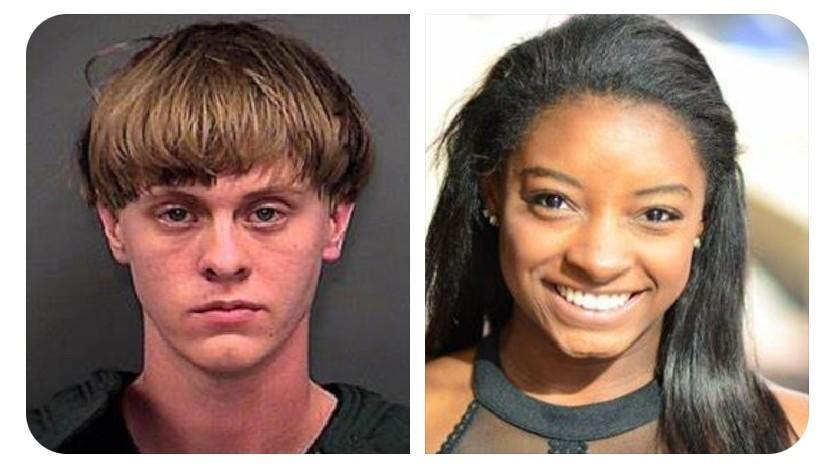
Dylan Roof , I remember him, a person who murdered innocent people. His mental health was stated in media as warranting attention and was not rejected for being misplaced.
Simone Biles is an Olympian Living Legend, and her mental health struggles are being mocked.
Very interesting parallel
https://twitter.com/BlackAlphaNetw1/status/1420126314183512064?s=09 -
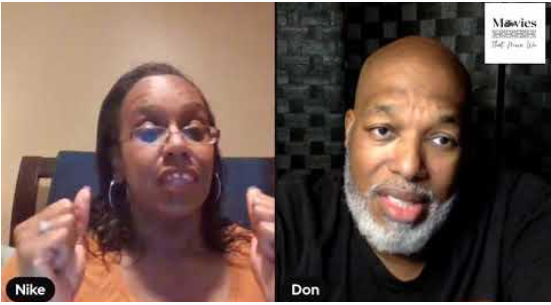
My intial reply to the video
nina simone was a polymath... the problem with black people when we gather in public is, for events meant for music or community, march on washington/summer of jazz/ jazzmobile/million man march/black film festival.. black people don't produce violence. But, we do produce violence when the tipping points are reached. ... I disagree with both of you. I don't think the lack of media outlets wanting to display the Summer of Soul is a shame. Ownership matters folks. You both mentioned how Gil Scott Heron or the Last Poets were not on the bill. But that was and is part of the problem. White people own media outlets that allow all spectrums of the white community to speak. Name me one Black owned media outlet that serves five unique black segments in the black community? Yes, my parents remember that concert. To be blunt, Harlem has a long history of similar events. That famous photo at Duke Ellington's house is not a joke. Harlem between the 1920s -1970s had the greatest collection of black entertainers for a region in any city in the usa. The recording of the concert was a surprise for my parents. ... Don, no one is a complete encyclopedia:)
Someone somewhere in the internet stated the Black community ended the great era of Black Music in the 1970s, I oppose that position. The following is my reply
We didn't end it. All musical eras end. To be blunt, the black community in usa had many great musical times after the war between the states. The st louis/to harlem slide jazz era. The big band era. The R&B initial era. Motown. Many great black songwriters in each of those eras. We didn't end , we changed. Black people in the usa's music changes as we change. The reason why we made the blues is cause right after the war between the states, many of us had a sadness, a blue mood. When we started growing more financially positive, actually getting whites to allow us to own businesses or get paid to do ork while still being nonviolent <not saying all black people wanted that but I comgress>, we turned the blues into rhythm and blues. After world war II when the black community oddly enough had large financial growth for individuals, we created rock and roll from R&B which is from the Blues. We created Funk as a blues version of the motown sound. Where motown was manicured black music for the white audience, in the same vein as scott joplin's minstrel music, which he did alongside his ragtime works. Ragtime was in my view, a piano version of jazz, which was started with horned instruments in new orleans. Jazz progressed from the northern expansion. Starting from the storyville's of new orleans to St Louis, to Chicago to HArlem, to every bar from Shanghai to Berlin to Rio de janeiro to calcutta to Cairo all around the earth, jazz was played at one time, a rare achievement for one art form. So much so that colleges throughout humanity teach jazz. Many surviving jazz musicians were able to financially survive being the first jazz teachers in schools where only white jazz teachers may exist today. No, black music changes as black people change. House Music comes from the urban black community, which in the vein of funk fuses all the many prior musical forms from Blues or Jazz. But with a larger technological capability than Funk, which began using tech in unique ways for music. We didn't end it. Today you can hear way too many excellent black blues musicians under 50, black jazz musicians under 50. White owned media companies dominate the industry and they prefer pop music, which is hat Motown or the Ragtime was. All three are intended to appeal to mass audiences, be good to sell. All three evaded or try to evade cultural friction. So, all is good, the black musical heritage lives in the black community for me, and continuous to grow or change, becoming more global, having more linguistical width than in the past, more cultural variance. All is good.
Movies That Move We video Reviewhttps://www.youtube.com/watch?v=6L1bNVo8gYU
-
I finished watching the documentary linked below concerning Buddy Guy and while I didn't learn anything I didn't know about the music industry, I did learn about some personal information on Buddy Guy's life i did not know. I think those unfamiliar with the Blues will get to see many faces they never saw or names they never heard or hear some music as well. But, the following prose is based on a comparison I heard between the stated documentary side one about daft punk I saw.
In both documentaries, a truth was presented. When Daft Punk won the best grammy award, they said, people in the usa are shocked by the music they play but the music they play was started in the usa, in the black community.
In the buddy guy documentary, buddy guy admits, it was the rolling stones + eric clapton side other british acts, simple admittance that they learned from listening to black blues musicians from the usa, that changed his career.
House Music side the Blues were both initiated by the Black community, a race based on a phenotypical range of skin not geographic forbearance for those who do not know , in the USA. The two styles have a century or more distance between their starting points. By these two films, people in the music industry are admitting that the white < phenotypical range not geographic forbearance> community in the usa for over a century, covering the entirety of the commonly named 1900s, existed side a black community they knew and know nothing about.
Why did I mention this? In the USA many people are always talking about the unity of the statian <from the usa , a term to my knowledge first used by mark twain, a white man> community. I read so many articles where people are suggesting the USA has a unity that is breaking. But, is that true?
Music isn't a blade or a bomb or an elected position or a revenue earning firm. Music is always an easily spreadable thing in human culture. Maybe the problem in the USA today is a myth of unity or good neighborship exists in the usa, that is not true...
What say you?PBS site- A song
The Blues Chase The Blues Away from Buddy Guy is free to listen to
https://www.pbs.org/wnet/americanmasters/stream-buddy-guy-blues-chase-blues-away-documentary/17954/